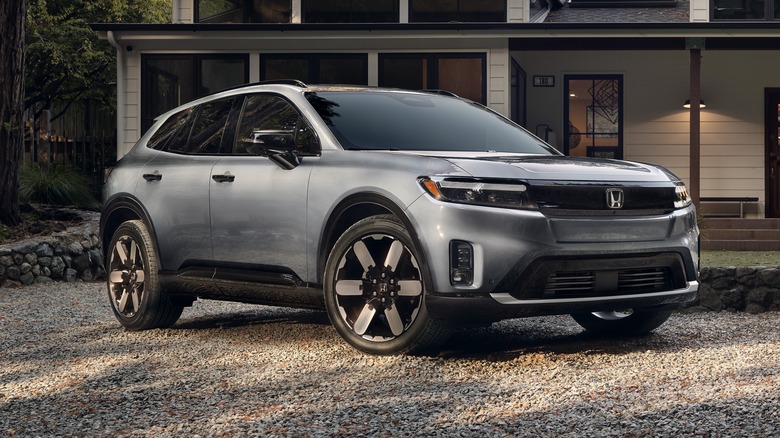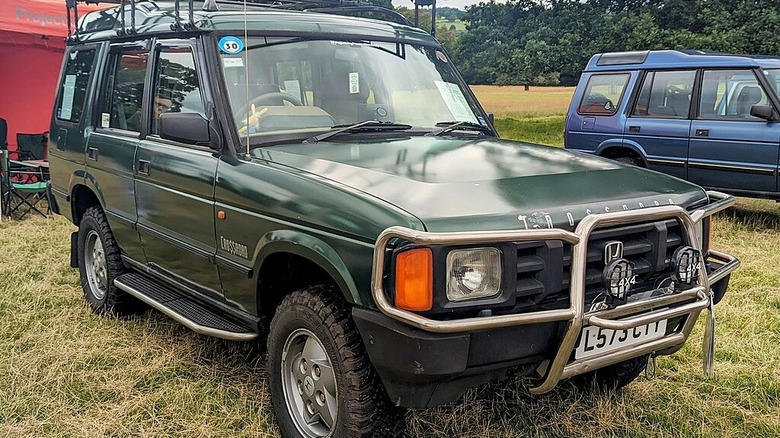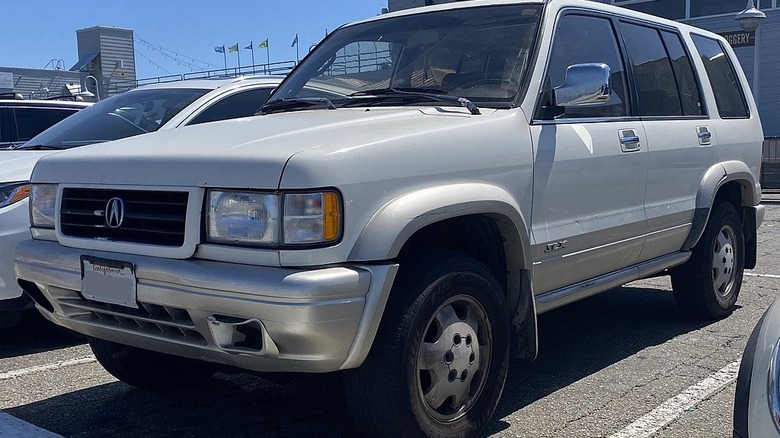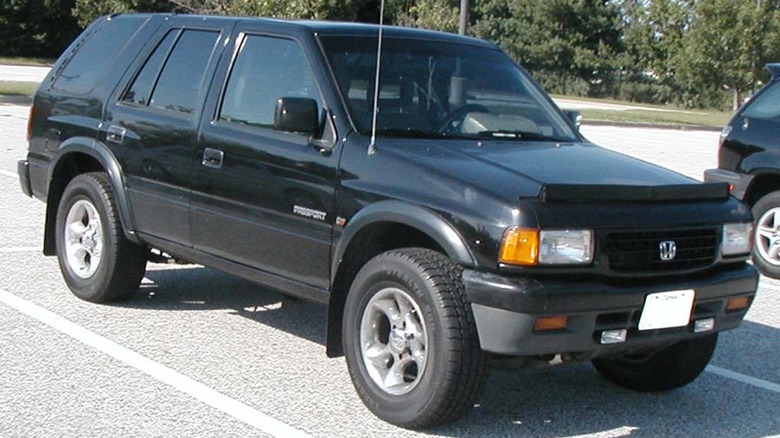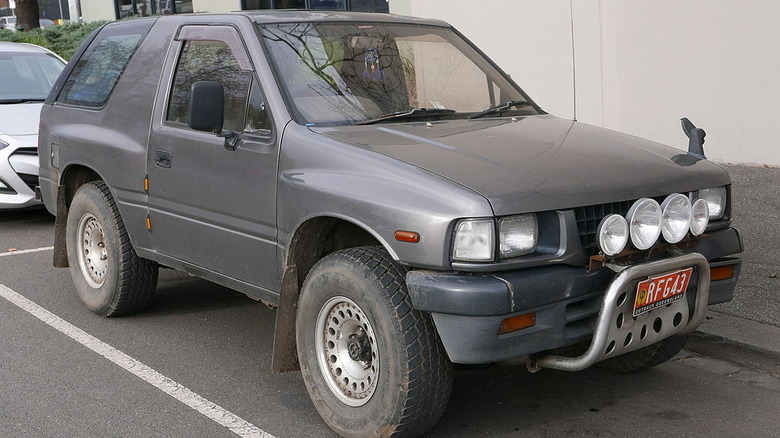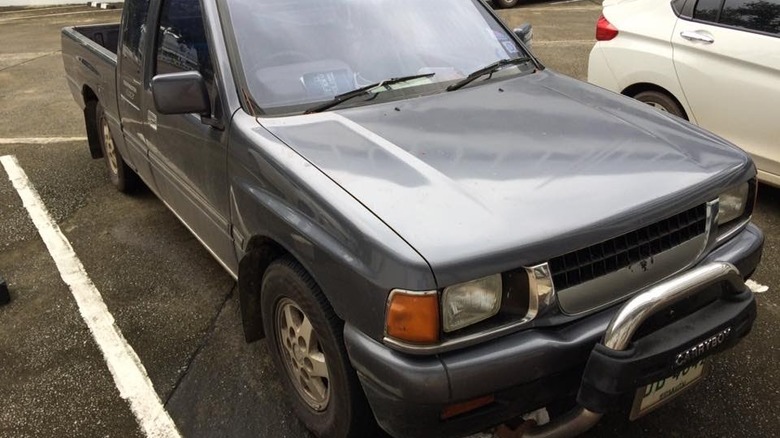6 Honda Models That Are Actually Rebadged Cars From Other Manufacturers
One of the more amazing things about the automobile business is how a company is able to sell multiple iterations of what are essentially the same vehicle. General Motors does this quite frequently, with the most famous example being the Chevrolet Silverado and the GMC Sierra. Aside from some minor aesthetic details unique to each company — both of which are owned by General Motors — these are mechanically the same pickup trucks. You might find it odd that the company would intentionally create competition with itself when it could just put all its energy into one or the other, but considering both trucks are among the ten best-selling vehicles in the United States, GM has been able to find success in maximizing the vehicle platforms it has built.
You can understand this somewhat because it is all under the umbrella of the same company, but that is not always the case. Sometimes, one company builds a vehicle, and another company strikes a deal to rebadge that vehicle as its own to sell. This could be for territorial reasons if the initial manufacturer doesn't have a strong foothold in one country, but it could also be because these two companies collaborated together on developing a particular vehicle, allowing each company to sell its own version of it whether you realize it or not. Although it doesn't do it often, Honda has several of these vehicles in its automotive history that fit into both categories. Hondas have hit the road that were actually made by American, British, and even other Japanese competitors, and here are six that may surprise you.
Honda Crossroad
The first Honda on the list may not be familiar to many from the United States, as this was a model sold exclusively in Honda's native country, Japan. Quite frankly, it may have passed by many Japanese people as well, considering its two stints in production were both relatively short. That vehicle would be the Honda Crossroad, which first hit the market for the 1994 model year. While that is when it arrived in Japan, the United Kingdom actually saw this particular model first in 1989 when it went by its original name, the Land Rover Discovery.
At the very end of the 1970s, Honda and Land Rover's parent company Rover started a partnership that aimed to elevate each company. Rover was looking to improve the reliability and build of its vehicles, and Honda wanted a way into the British automotive marketplace. The Honda Crossroad was a rare instance of rebadging between the two, though they developed things like the Acura Legend and the Sterling 825, one of the worst vehicles ever made by Honda.
With that update, Rover and Honda expanded the 4x4 to both Japan and the United States in 1994, using the Honda Crossroad branding in the former. Amazingly, this is the only Honda to ever utilize a V8 engine under the hood, despite the fact that Honda produces its own V8 engines. Production ended for the Crossroad in 1998, but the Discovery continues to be made to this day. Honda briefly revived the Crossroad name in 2007, but it was no longer a Land Rover rebadge.
[Featured image by Calreyn88 via Wikimedia Commons | Cropped and scaled | CC BY-SA 4.0]
Honda Horizon/Acura SLX
This next vehicle was a rebadge by Honda, but it was also used as a rebadge for Honda's luxury arm as well, Acura. Unlike with the Crossroad, this was not Honda working with a company from another country to improve its international footprint. This was Honda working with fellow Japanese automaker Isuzu, which would be far from the only time Honda would sell a rebadged Isuzu vehicle. In North America, this vehicle was known as the Isuzu Trooper, which had been on the market starting in 1983, and in Japan, it was called the Isuzu Bighorn.
Honda would not decide to lend its name to its own iteration of the full-size SUV until 1994. In its home country, it was released as the Honda Horizon, but when it was brought over to the United States the same year, Honda opted to spruce up the SUV a bit to be the more luxurious Acura SLX. Notoriously, the SLX and Trooper were at the center of a massive controversy where Consumer Reports reported on a defect that caused the vehicle to easily rollover. However, the National Highway Traffic Administration did not find this to be the case in its tests, leading to a multi-million dollar defamation lawsuit that Isuzu did ultimately lose.
Honda was not the only company to rebadge the Isuzu Trooper. Around the world, companies ranging from Chevrolet to Subaru released their own versions of the SUV, which saw its final model leave the factory in 2002.
[Featured image by Cutlass via Wikimedia Commons | Cropped and scaled | CC0 1.0]
Honda Passport
We should all be fairly familiar with the Honda Passport, the mid-size crossover SUV that the company introduced for the 2019 model year. More precisely, this was a reintroduction of the Passport, which had been out of commission since 2002 after nearly a decade in production. While the current generation of the Passport is its own thing, the first two generations were actually a rebadge of another Isuzu vehicle, the Isuzu Rodeo, showcasing the two companies' collaboration once again.
In Japan, the Rodeo name was utilized for a pickup truck, but in the United States, Isuzu gave it to the mid-size SUV, which first arrived for the 1991 model year, the latter of which served as the basis for the Honda Passport. This era of the vehicle encompassed two different generations, where the 1998 model year saw a fairly significant aesthetic update implemented. However, even this newer version was still just based on the Isuzu Rodeo with minor Honda alterations. Although the reliability wasn't as questionable as the Crossroad/Trooper, the Passport did leave a lot to be desired, which is not something you want that brandishes the usually very reliable Honda name.
The reason the Passport ended production in the early 2000s was simply because Honda and Isuzu ended their partnership. It should come as no coincidence that the same 2002 model year was also when Honda debuted the Pilot, which was effectively a replacement for the Passport that Honda created itself. Now, Honda sells it alongside its own version of the Passport.
[Featured image by IFCAR via Wikimedia Commons | Cropped and scaled | Public Domain]
Honda Jazz
The Isuzu Rodeo frame came in two different variations: short-base and long-base. The long-base version is the one that became the frame for the Honda Passport. However, the short-base frame was also something Honda decided to use for another rebadge of an Isuzu vehicle. In the United States, this particular vehicle was called the Isuzu Amigo, while in Japan, it was known as the Isuzu MU. This short-base version of the SUV actually predates its longer sister vehicle by a few years, hitting both the American and Japanese markets in 1989.
While Honda rebadged the long-base version in the United States, it decided to rebadge the short-base one only in Japan, calling it the Honda Jazz. This is not the first time that Honda has utilized the Jazz name in its history, and it is not the last, either. The very first Honda Jazz was what the subcompact Honda City was renamed in Europe when it debuted back in 1981, and since then, Honda has used this name for a motorcycle, a scooter, and another name for the Honda Fit in certain territories, which is how it is currently being implemented.
This version of the Honda Jazz was simply a Japanese exclusive version of the three-door Isuzu MU/Amigo. Honda started selling the Jazz in 1993, and by the time 1996 ended, it no longer did, even though Isuzu would continue to make its original version of the SUV into the mid-2000s.
[Featured image by OSX via Wikimedia Commons | Cropped and scaled | Public Domain]
Honda Tourmaster
If you thought the partnership between Honda and Isuzu couldn't have produced anymore rebadges, you would be incorrect, as there is still one more we need to talk about. If you haven't noticed, with all of these Isuzu vehicles, the goal with this partnership was to infuse the Honda line with larger vehicles. The opposite was also true, as Isuzu would rebadge smaller Hondas as its own, like the Honda Accord becoming the Isuzu Aska in Japan. We have covered several Isuzu SUVs that Honda utilized, but the company also rebadged an Isuzu pickup truck as well.
To go back to the Rodeo name, that was what Isuzu used for this pickup truck in Japan starting in the late 1980s, supplanting the Faster nameplate that was used prior to that. Strangely, the truck did not have a proper name in the United States, as it was just known as the Isuzu Pickup. Unlike all of the other Isuzu/Honda rebadges mentioned thus far, the Honda version of this vehicle did not show up in Japan or the United States. Instead, that was sold exclusively in Thailand, where the truck was called the Honda Tourmaster.
This truck was sold all over the world, and it rarely had the same name across multiple territories. Isuzu itself used the names Fuego, Invader, TFR, Ippon, and more in various territories, and other companies rebadged it too, like the Chevrolet LUV in the United States and the GMC Dragon in Mexico. For Honda, it was just the Tourmaster.
[Featured image by M.rJirapat via Wikimedia Commons | Cropped and scaled | CC BY-SA 4.0]
Honda Prologue/Acura ZDX
The 1990s were clearly the height of Honda rebadging other companies' vehicles to expand its arsenal across various territories. However, Honda actually has a vehicle that it currently sells that fits into this category as well, and it is the newest vehicle the company makes as well. That would be the Honda Prologue, the all-electric SUV that debuted for the 2024 model year. This marks the first time on this list that Honda was working in conjunction with an American company, General Motors.
The Prologue is built on GM's Ultium EV platform, which the company utilizes across a wide variety of its electric vehicles for the last couple of years. In the case of the Honda Prologue, it takes its cues from the Chevrolet Blazer EV, which debuted in the same 2024 model year. This is not the only usage of this particular platform for Honda, though. The company's luxury arm has also taken this for another 2024 vehicle in the Acura ZDX. Unlike the Prologue, the ZDX is not a new vehicle for the company. It started production back in 2009 until it was shuttered in 2013. Acura revived the nameplate for the luxurious version of the Blazer/Prologue.
Currently, no other company outside of General Motors besides Honda has used the Ultium platform. There aren't any publicized plans for more Honda or Acura rebadges from this venture, either. However, as companies continue to push electrification, it wouldn't be surprising to see that expand in the future.
